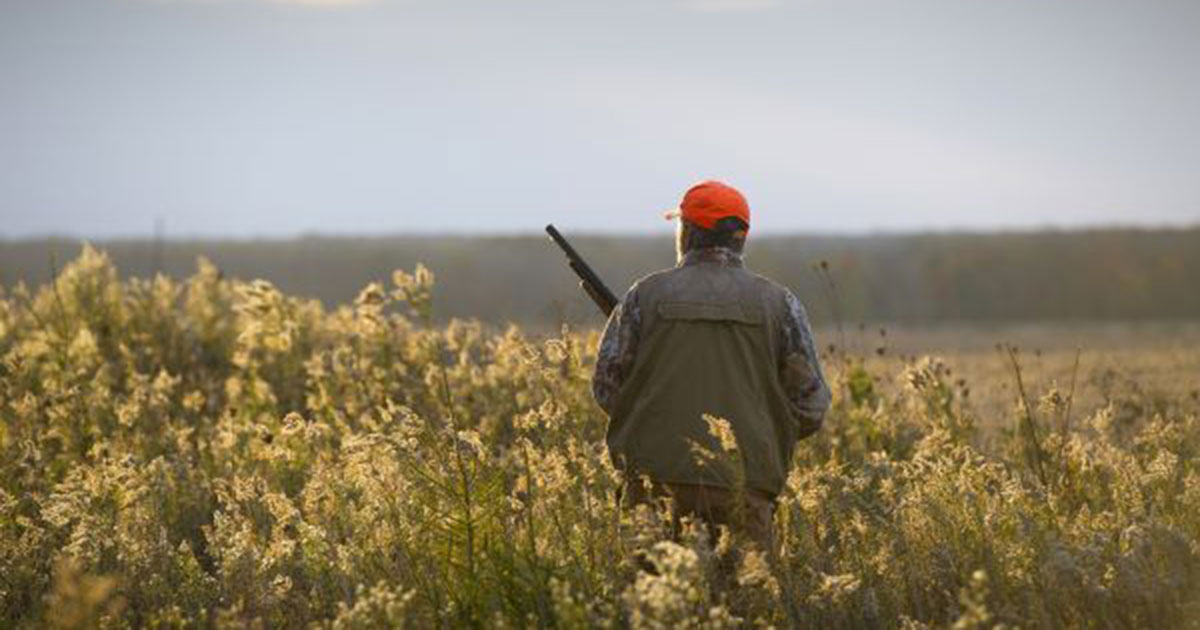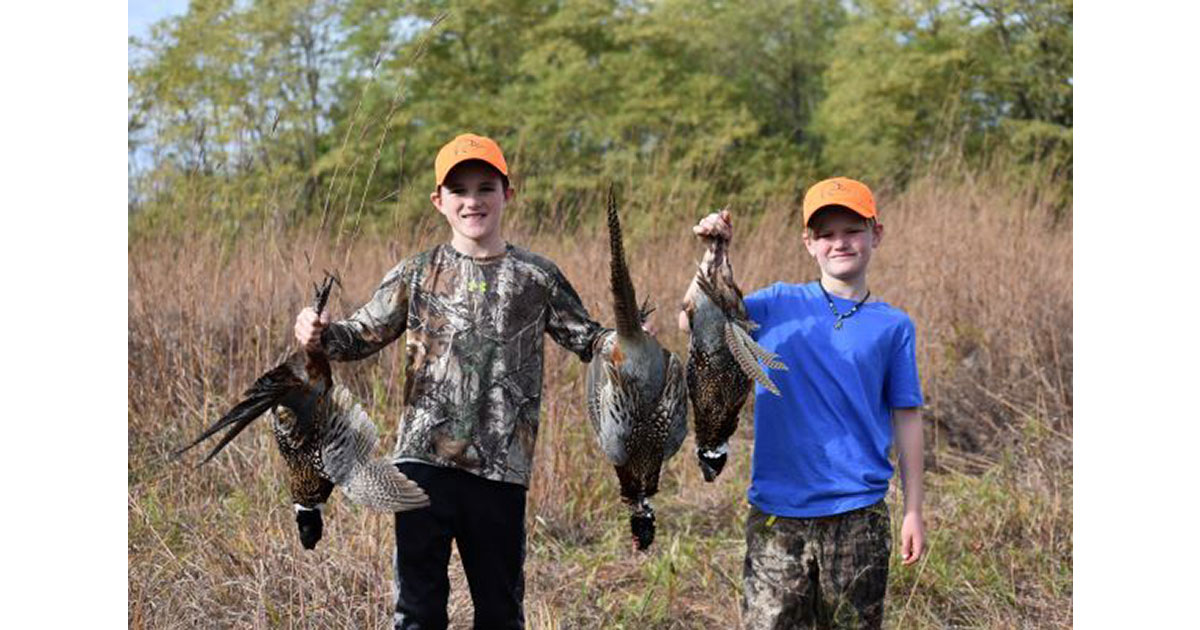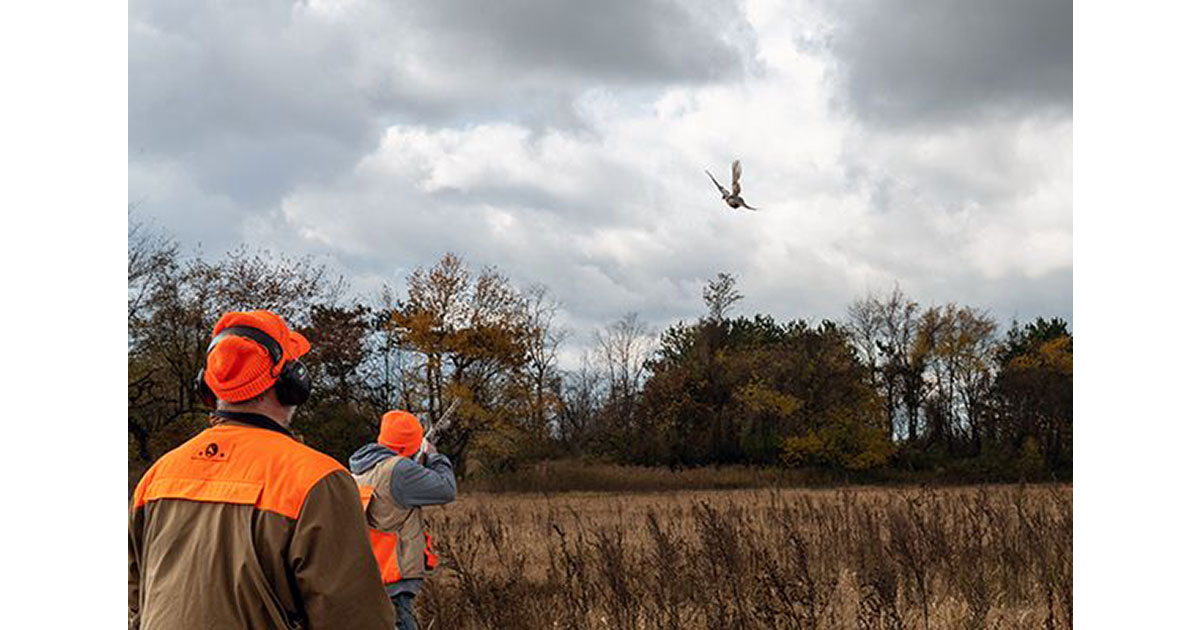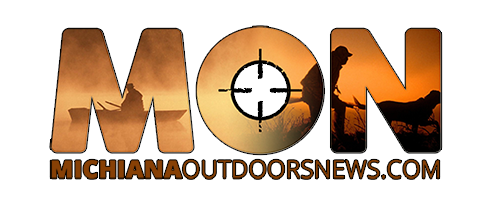- Details
The St. Joseph (Michigan) Pheasants Forever will host its first Veterans Hunt Dec. 6 at the Willow Lake Sportsman’s Club on U.S. 131 north of Three Rivers.
Participating veterans will get a free hour, 3-bird hunt over dogs.
The event is open to hunters who pre-register and who bring with them proof of military service and a Hold Harmless Agreement. The event is open to veterans and not family members or friends.
A hunting license isn’t necessary but advanced registration is required with a $10 registration fee that will be refunded when you sign in to hunt.
You can register and get questions answered by calling Brett Johnson, 269-251-9894.
You are required to bring your own shotgun and shells (No. 6 shot recommended). If you don’t own a shotgun, discuss it with Johnson when you call and he may be able to arrange for a loaner.
The event is co-sponsored by American Legion posts in Colon, Constantine, Sturgis and Three Rivers.
- Details
MDNR Report

Rooster pheasants will be released on 13 state game/wildlife areas throughout southern Michigan this fall. Releases will take place today-Nov. 14 and Dec. 1-31, coinciding with pheasant hunting seasons.
Adam Bump, Department of Natural Resources upland game bird specialist, said, "For seasoned hunters and newcomers alike, this is a great opportunity to connect or reconnect with upland bird hunting in Michigan.”
Directions to parking lots at release sites are provided online.
Releases will take place during the regular pheasant season at locations below.
Locations include:
- Cass City (Tuscola County).
- Cornish (Van Buren County).
- Crane Pond (Cass County).
- Crow Island (Bay and Saginaw counties).
- Dansville (Ingham County).
- Erie (Monroe County).
- Lapeer (Lapeer County).
- Leidy Lake (St. Joseph County).
- Townline 16 (Bay County).
- Pointe Mouillee (Monroe and Wayne counties).
- Rose Lake (Clinton and Shiawassee counties) - Temporarily paused.
- Stanton (Montcalm County).
- St. Johns Marsh (St. Clair County).
All hunters must adhere to pheasant hunting regulations, license requirements and bag limits. Only rooster pheasants may be harvested. The daily bag limit is two, and the possession limit is four.
- Details

The Joe Johnson Memorial Youth Pheasant Hunt will be held Nov. 1 from 9 a.m. to 3 p.m. at the Gordon Guyer-Augusta Creek State Wildlife Area in Kalamazoo County.
Hunter safety-certified youth hunters, ages 12-17, are invited to join this pheasant hunt. Hunters must bring their base license, firearm and ammunition, hunter orange garments and a cooler for their harvested birds.
Groups of two will hunt with a guide, dog and dog handler. Pheasants will be planted for each group to hunt.
There are limited spots available for this hunt. Register now to reserve a spot for your youth hunter. Lunch will be provided to participants.
There is a $20 ticket fee for each hunter. Participants will receive a bag of goodies and will be registered for a grand-prize shotgun given away at the end of the event.
Visit Joe Johnson Memorial Youth Pheasant Hunt to register.
This pheasant hunt is held in honor of conservationist Joe Johnson, director of the Kellogg Bird Sanctuary from 1985-2007, who was a leader in many conservation efforts throughout Michigan, the Great Lakes and beyond.
- Details
IDNR Report
Hunters can now apply for Indiana DNR reserved hunts at GoOutdoorsIN.com.
Reserved hunts included in this round include December Gamebird Areas and Indiana Private Lands Access (IPLA) hunts.
The online application method is the only way to apply for the hunts listed. No late entries will be accepted. Applicants must possess a hunting license that is valid for the hunt for which they apply. A $1 tech fee is charged for each hunt application purchased.
Applications must be submitted by 11:59 p.m. ET on Wednesday, Oct. 29. A complete list of hunts available is at on.IN.gov/reservedhunt.
In December 2024 a new license system, the Activity Hub, replaced the former system. To purchase a license or apply for a reserved hunt, follow the instructions below. Allow yourself plenty of time to log in and learn how the system works.
Click the login button on the home page of GoOutdoorsIN.com. From there, you will be taken to Access Indiana, where you will be required to log in or create an account. Once logged in through Access Indiana, you will automatically be directed back to the Activity Hub. From there, you will be able to purchase a license and apply for reserved hunts. Note that if it’s your first time using the Activity Hub, you will need to look yourself up in the system and verify or correct your personal information.
Hunters at each participating property will be selected through random computerized draws and will be able to view results at GoOutdoorsIN.com. An email will be sent to all applicants when the drawings have been completed.
Reserved hunts in this application period include:
- December Gamebird Area (GBA) Hunts in Benton, Jasper, Newton, Warren, and White counties. Hunters may choose from a variety of hunt dates in December. These hunts are not put/take pheasant hunts
- IPLA hunts for deer muzzleloader/archery in LaPorte, Cass, Sullivan, Scott, Harrison, and Bartholomew counties.
- IPLA hunts for waterfowl in DeKalb, Sullivan, and Batholomew counties.
- IPLA hunts for small game in Scott, Sullivan, DeKalb, Noble, Stueben, Green, and Pike counties.
- Details
MDNR Report

Michigan’s pheasant season Opens Oct. 10 in Zone 1 and Oct. 20 in zones 2 and 3.
The pheasant management unit open to hunting Oct. 10-31 in Zone 1 (Upper Peninsula) includes all of Menominee County and portions of Delta, Dickinson, Iron and Marquette counties.
Zones 2 and 3 (Lower Peninsula) are open to pheasant hunting Oct. 20-Nov. 14. Zone 3 (southern Lower Peninsula) also is open Dec. 1-Jan. 1.
The daily bag limit is two, and the possession limit is four. Only male pheasants may be harvested.




